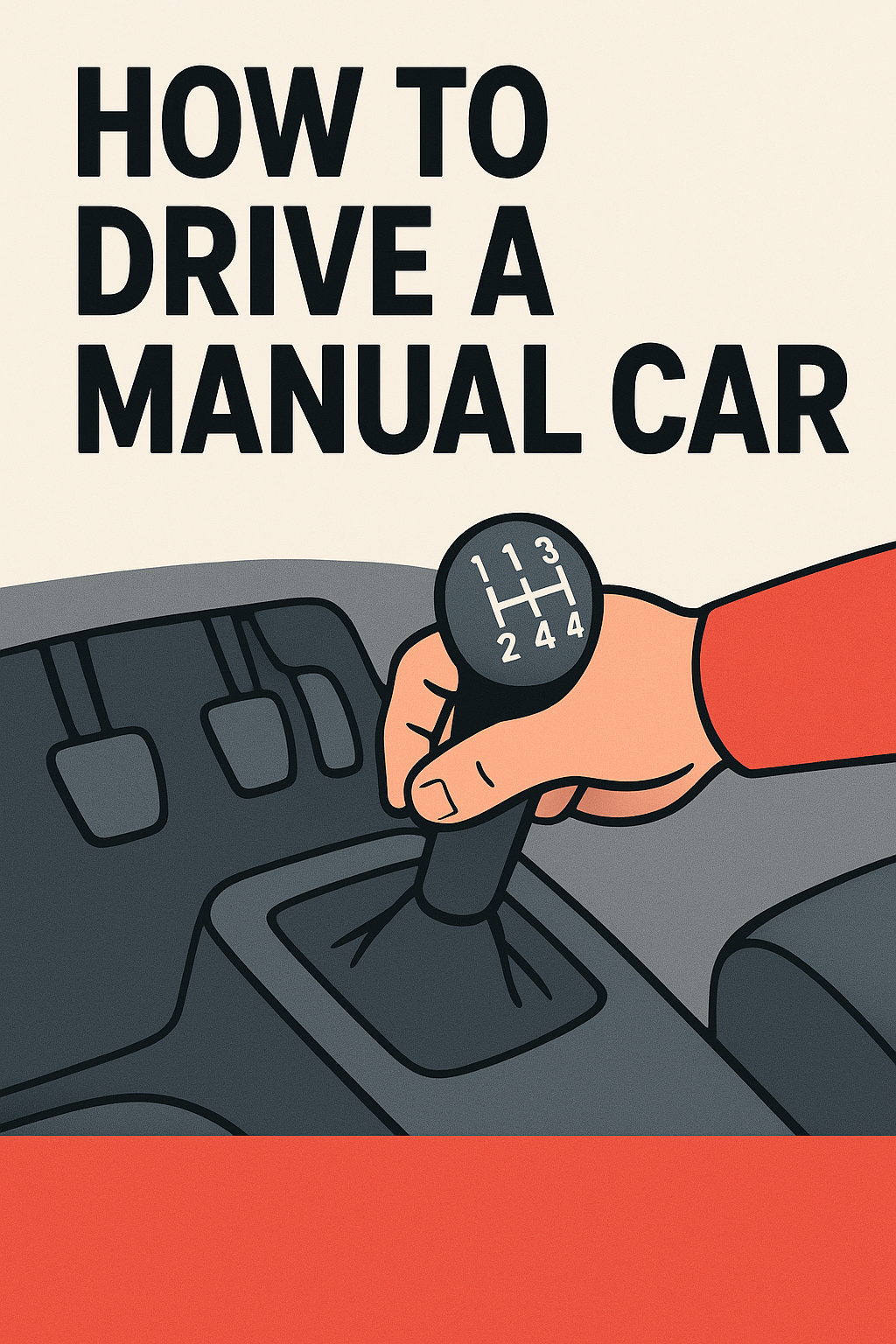How to Drive a Manual Car (Stick Shift): Step-by-Step Beginner’s Guide
Learning how to drive a manual car can feel intimidating at first—but once you understand the basics, it becomes second nature. Manual transmissions (commonly called stick shift cars) give drivers more control, often improve fuel efficiency, and make driving more engaging.
This complete guide walks you through the fundamentals, startup sequence, gear shifting, stopping, advanced driving techniques, and common mistakes to avoid when learning to drive manual.
Understanding the Basics of a Manual Car
What is a Manual Transmission?
A manual car uses a clutch pedal and gear stick to connect and control three main components:
- Engine – generates power.
- Transmission (gearbox) – regulates power delivery.
- Wheels – move the car.
The clutch connects/disconnects the engine from the transmission, while the gear stick selects the gear that controls speed and torque.
Gearstick Layout
Most manual cars use a floor-mounted gearshift with the following:
- Neutral (gear disengaged, stick wiggles freely).
- Forward gears (1st, 2nd, 3rd, etc.).
- Reverse gear (marked “R”).
Step 1: Getting Started
Follow these steps to safely start a manual car:
- Adjust your seat so your left foot can fully press the clutch pedal.
- Ensure the gearstick is in neutral (wiggle it side to side).
- Press the clutch fully with your left foot.
- Turn the ignition to start the engine.
- Release the parking brake once you’re ready to move.
Step 2: Moving Off Smoothly
- With the clutch pedal fully pressed, shift into 1st gear.
- Slowly release the clutch until you feel the “biting point”—the car will slightly move forward.
- Apply gentle pressure to the accelerator while releasing the clutch fully.
- The car begins to move forward smoothly.
✅ Pro Tip: Practice finding the biting point in a safe, open space before driving on the road.
Step 3: Shifting Gears
- As engine RPM rises to around 2,500–3,000 (or as recommended for your car), press the clutch pedal down fully.
- Shift into the next gear (1st → 2nd, 2nd → 3rd, etc.).
- Release the clutch gently while applying light gas pressure.
⚠️ Avoid “riding the clutch” (resting your foot on it) to prevent wear.
Step 4: Slowing Down & Stopping
To slow down or stop:
- Lift off the gas and apply the brake pedal.
- As speed drops, press the clutch pedal and downshift to a lower gear if needed.
- For a full stop:
- Press clutch + brake together.
- Shift into neutral.
- Release the clutch.
Advanced Techniques (For Confident Drivers)
- Hill Starts: Use the handbrake or master clutch control to prevent rolling backward on slopes.
- Heel-and-Toe Downshifting: A performance technique where you brake with your toes and tap the throttle with your heel for smoother downshifts.
- Rev-Matching: Briefly rev the engine before releasing the clutch when downshifting for smoother transitions.
Common Mistakes to Avoid
- Lugging the engine – Driving in a high gear at low RPM strains the engine.
- Dropping the clutch – Releasing it too fast causes stalls and damage.
- Holding the car on the clutch – Use the brake/handbrake instead on hills.
- Money-shifting – Accidentally shifting into the wrong gear can severely damage the transmission.
Tips for Beginners
- Practice in an empty parking lot before driving on busy roads.
- Listen to the engine sound to know when to shift.
- Keep your left foot off the clutch unless you’re shifting.
- Stay patient—smooth manual driving comes with practice.
Conclusion
Driving a manual car is a skill that combines timing, coordination, and awareness. With practice, you’ll gain better control of your vehicle, more confidence on the road, and a deeper appreciation for driving.
Whether you’re learning for the first time or refreshing your knowledge, these steps and tips will help you master how to drive a manual (stick shift) car with ease.

Leave a Reply